

I'm a huge sucker for cycles and so is Dire Wolf (and so is Wizards). Most often, cycles exist to demonstrate the nature of the set by viewing it through the lens of each color/faction (and to demonstrate the nature of each color/faction through the lens of the set). Sometimes, though, they exist purely to support a number of archetypes. This is particularly the case with 2+color cycles like dual lands and the 10 Eternal cards we're looking at today.
Each faction has a representative removal spell: Fire has Torch, versatile and crazy efficient; Primal has Permafrost, also efficient, better at stopping big things, but can't touch players or units with endurance; Time is bad at removal, and leans on units via Xenan Initiation; Justice punishes big units with Vanquish; and Shadow has the fast and reliable Annihilate. They each have alternatives, of course, viable in the right context, but it's very rare you'll see a one- or two-faction deck not running these.
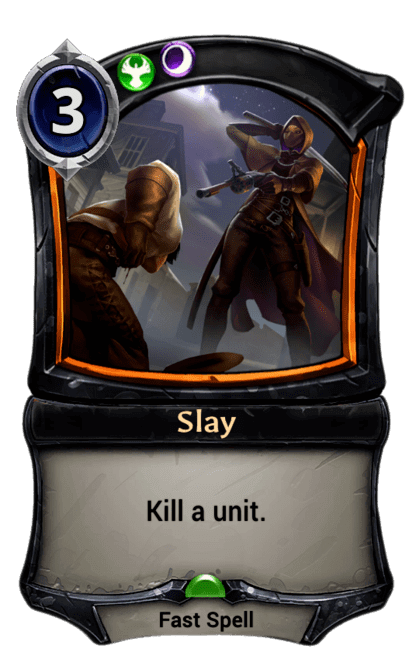
That's not the interesting thing. What warrants a post is the fact that all ten of the two-faction pairs also each have their own iconic removal spell. Justice and Shadow combine Vanquish and Suffocate into Slay. The only other card capable of killing literally unit is Deathstrike, which costs 1 more but is also fast, putting it right at the cusp of contextual playability (in Ranked—it's nuts in Draft).
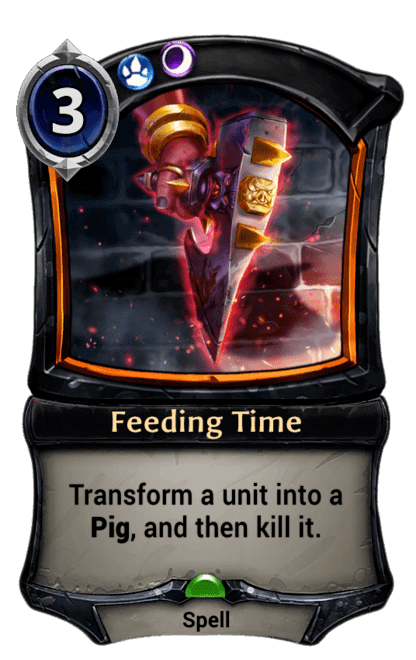
Primal and Shadow also kill any unit at sorcery speed with Feeding Time, but it's less efficient at 4 power, and ensures they can't Dark Return it. Primal's suite of transform spells can disrupt any unit-based strategy and all feed into the Mind Link deck. Also, it just feels worse to have your awesome unit transformed into a pig and slaughtered in front of your eyes.
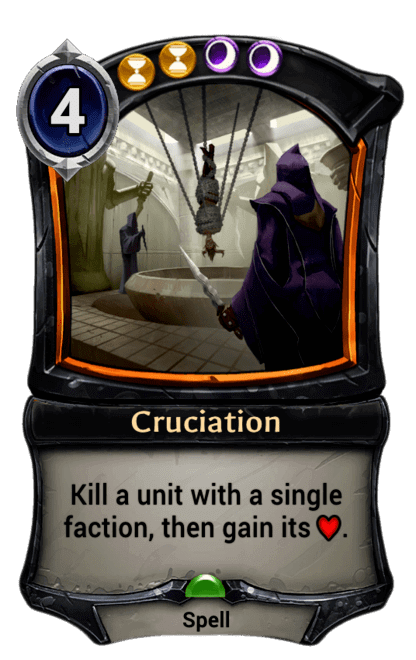
Time and Shadow add life gain to Annihilate, at the cost of +2 power, speed, and heavy influence requirements but Cruciation fits well enough into Katra's lifeforce deck. (Though I'd rather just run Annihilate and Extract.)
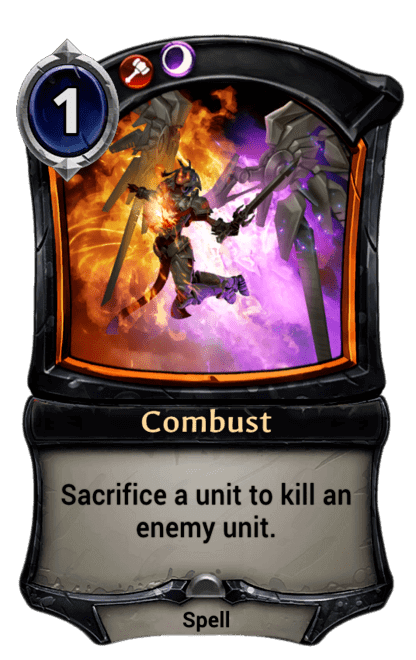
Fire and Shadow shares a theme of units you want to sacrifice and grenadin (which you make in bulk), so it's spell is Combust; killing any unit for one mana is great, especially when you get to entomb (or tribute) as a bonus.
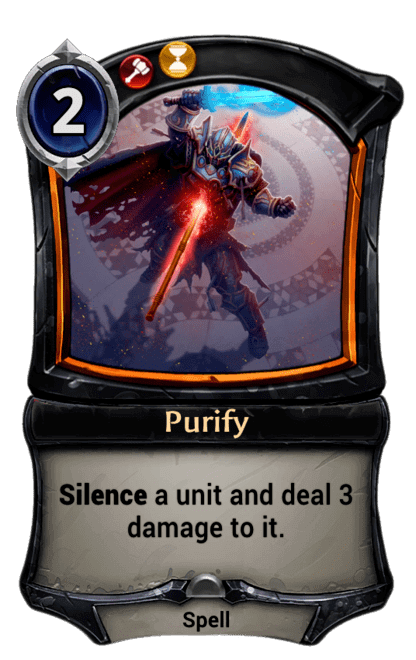
Fire and Time combine Torch and Silence to make Purify: Usually it works like a modal spell where you're happy to either kill something small or disable something large, but sometimes you hit something annoying like Dawnwalker and it feels amazing.
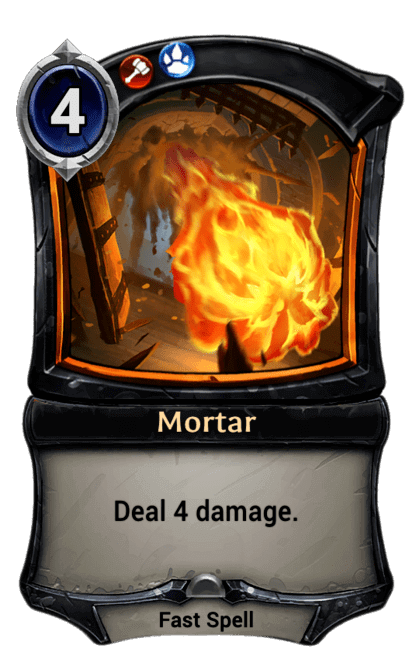
Fire and Primal combine Torch and Snowball in Mortar. It's hard to justify paying four power for burn that's only slightly larger, but it's fast which most of these aren't, and common so you'll see it in Draft. This is the weakest of the ten overall, but not the least reliable.
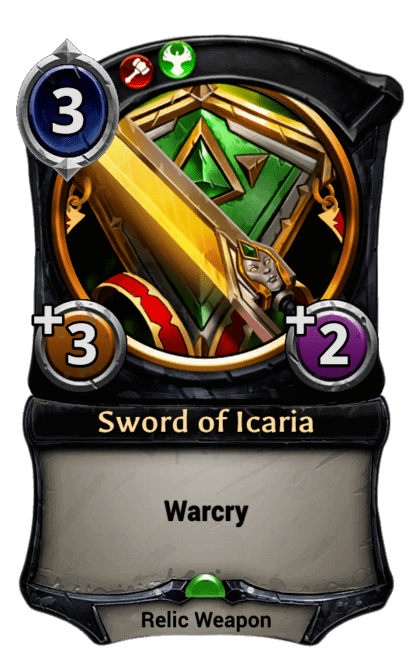
Fire and Justice step slightly off-cycle with their best answer being a relic weapon, but let's be clear: the ability to attack multiple times with Sword of Icaria is not exactly a weakness. It fits right into their biggest theme too, thanks to warcry (and Justice's penchant for reinforcing weapons).
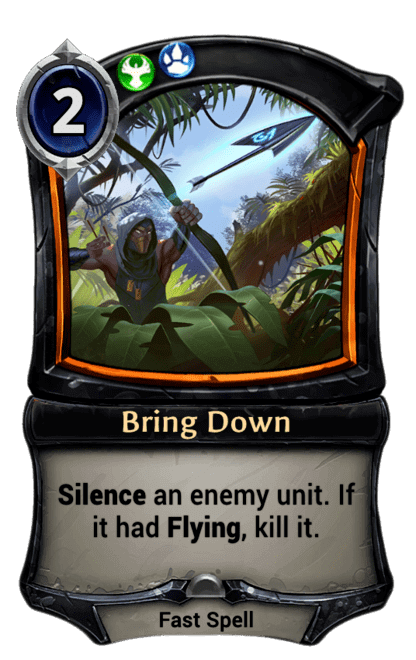
Justice and Primal have the most fleeting of answers in Shield Bash, but a lot of decks are happy to trade permanence for a cantrip. Or maybe their iconic removal spell is Bring Down. As a Plummet with silence attached, it's clearly analogous to Purify, but it's just a lot more optimistic to expect your opponents to be playing flyers than units with 3- toughness.
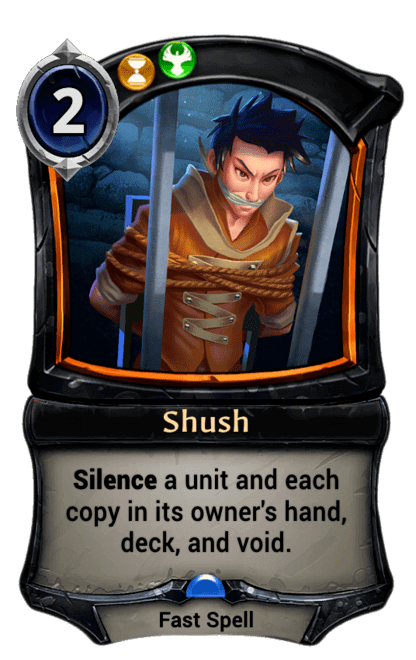
Justice and Time converge on their love of silencing units with the ultimate silencer: Shush. The ability to turn off every copy of your opponent's lynchpin unit is satisfying and can be effective, but paying 3 without actually changing cards or power on board is a real investment, and probably not something you want to rely on too much (especially when you can choose from Desert Marshal, Valkyrie Enforcer, and most of the other silence cards).
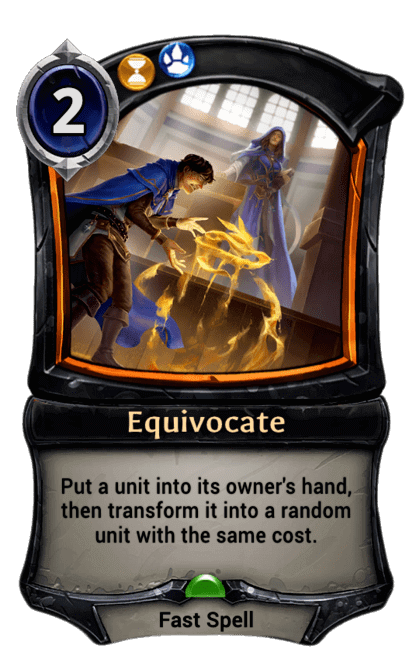
Time and Primal combine Teleport's bounce and Unstable Form's transformation in Equivocate, which spoils your plans and soaks up your power, but leaves your card total alone. What a pal. In Draft this can backfire, but in Ranked, you'll most likely turn their rare+ into a common; it may not be irrelevant, but it can't compete. When you factor in the destruction of weapons and stat boosts, the swing can be considerable.
It's a bit of a push to call this a cycle, simply because the only things tying these cards together is the fact they are two-faction answers to units and the most ubiquitous among cards in that class for their pairing. Does Sword of Icaria really count, even though it's not a spell? Neither is Permafrost (they're both 'attachments'—which is awkward since that word never appears on the curses and weapons it describes) but it's easily blue's most iconic answer. Shush is the only rare here and it doesn't prevent a creature from killing you, so does it count? Or do we just say Time+Justice is bad at removal? Which it's not because it has Harsh Rule.
It doesn't matter. The point of this post is not to be taxonomically correct, but to observe that Eternal approached their game design from a different angle than Magic, and that even though the core of the game is identical, that approach generated something distinctly different. We do see variations of kill spells within each color pairing in Magic, but they exist more as an exploration of what happens when those colors mix, rather than a concerted effort to ensure every pairing has a Constructed-relevant removal spell and that those spells speak to the nature of those pairings and/or support the play themes those pairings are already supporting. Play Design definitely thinks about making removal spells to support various color pairings in Magic, but the approach, the goals, and the results are different, and that's fascinating.

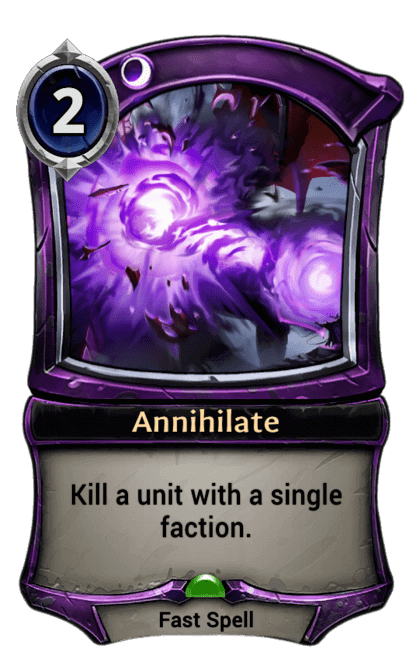
Desert Marshal (Amshush Viper?) is definitely more representative as a T/J kill spell, both in cost and actual Constructed playability.
ReplyDeleteI wasn't looking at units, but I agree.
DeleteDesert Marshal